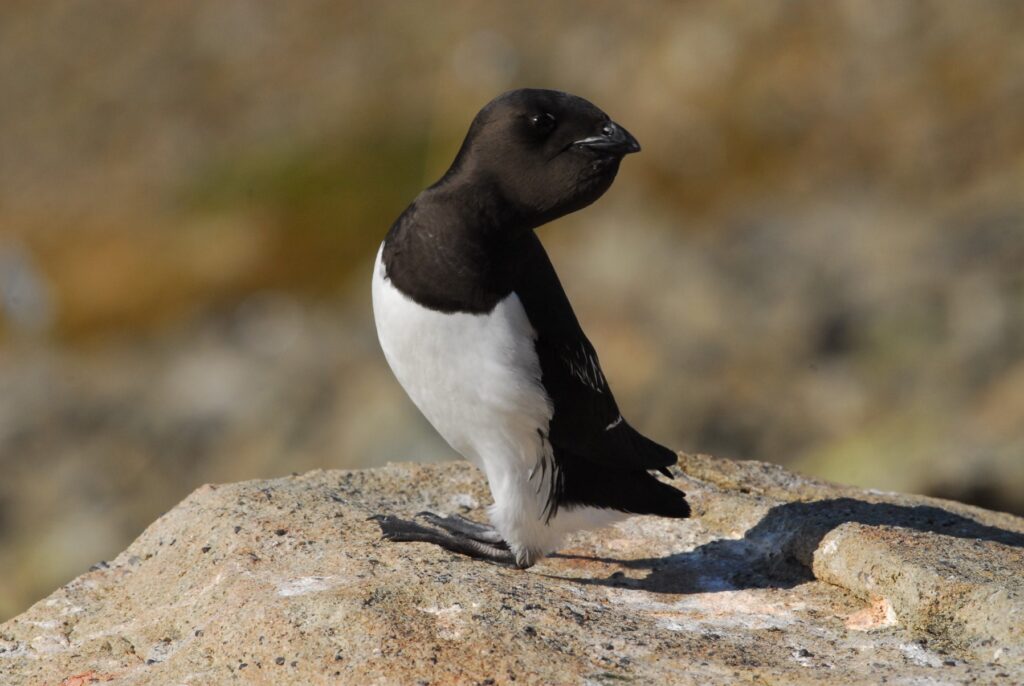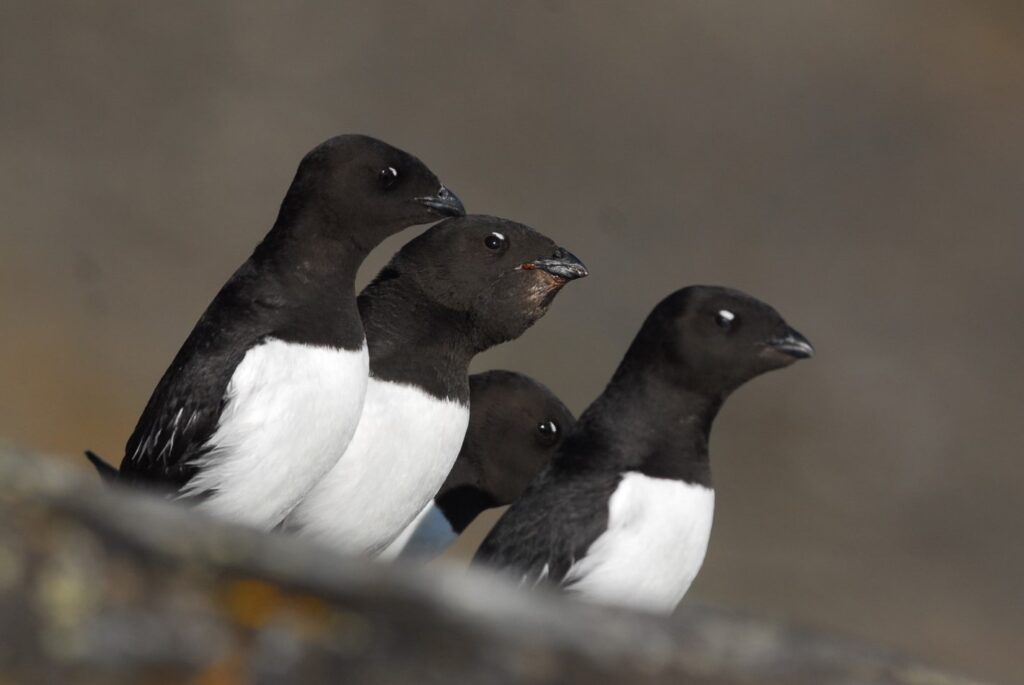Increased inflow of Atlantic waters into the Arctic may threaten the little auk
The Arctic is warming due to global climate change and an increasing influence of Atlantic waters. In a new study, long-term data examines how a high-Arctic specialist seabird copes with changing environmental variables at sea. The results are not encouraging.
Atlantification
Global warming and an increasing influence of Atlantic waters in the European Arctic are causing a so-called atlantification of the Arctic. This phenomenon is affecting the plankton biomass and communities with potential consequences for the upper trophic levels. Using long-term data (2005-2020) from a high-Arctic zooplanktivorous seabird, the little auk (Alle alle), researchers have tested the hypothesis that the atlantification affects the birds’ diet, body condition and demography.
Reduced chick survival
The study was based on data collected in three fjords in West Spitsbergen, Svalbard, each characterized by distinct oceanographic conditions. In all three fjords, a positive relationship was found between the inflow of Atlantic waters and the proportion of Atlantic prey, notably the copepod Calanus finmarchicus, in the little auk chick diet. A high proportion of Atlantic prey was negatively associated with adult body mass, although the effect was small.
– Chick survival was slightly negatively affected by a larger proportion of Atlantic prey in the chick diet the first 16 days after hatching, says Sébastien Descamps, one of the researchers behind the study.
– We were able to follow the chick development until 21 days of age in one of the fjords, and there, the negative effect was stronger and significant. This may imply that the effect of the atlantification is strongest during the last phase of chick-rearing.
Through a decline in chick growth, atlantification may thus reduce reproduction and eventually lead to population decline in little auks.
Negative effects are inevitable
The results of the study suggest that there are fitness costs for the little auk associated with the atlantification of West Spitsbergen fjords. These costs seem especially pronounced during the late phase of the chick rearing period, when the energetic needs of the chicks are the highest.
– We conclude, says Descamps, that even if little auks can partly adapt their foraging behaviour to changing environmental conditions, they are negatively affected by the ongoing changes in the Arctic marine ecosystems.
Even though the documented negative effects of atlantification were weak, the results of the study stress the importance of long-term monitoring data in the Arctic to improve our understanding of the ongoing atlantification and highlight the relevance of the use of seabirds as indicators of environmental change.
Read the article:

Photo © Sébastien Descamps

Foto © Sébastien Descamps
Contact person: Sébastien Descamps, Norwegian Polar Institute